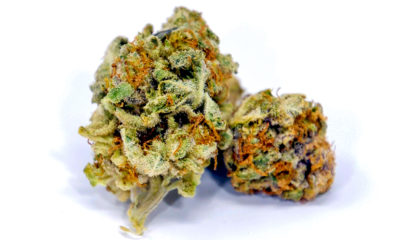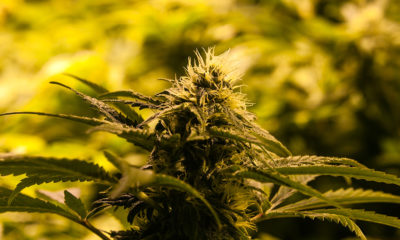Medical
New App Designed to Deter Driving Under the Influence of Marijuana
Thanks to a new application for smartphones, cannabis users no longer have to guess if they are in a good enough condition to drive.
Driving under the influence of a substance is something that should never be considered as a good idea by any responsible and safe individual. With the advent of personal and portable breathalyzers, there are now easy ways to test if someone is unable to drive due to excessive alcohol consumption. However, responsible cannabis users have been without these accurate testing devices for far too long, making the decision to drive after consuming it something very ambiguous in terms of safety.
Last Wednesday, the National Organization for the Reform of Marijuana Laws (NORML), made a public endorsement for a new app that can be used to assist marijuana users in determining the mental and physical state they are currently in.
The app, called Canary, uses a number of tests to determine whether or not the user is in a suitable condition to operate a motor vehicle. Canary has taken a revolutionary step forward in marrying the fields of technology, personal responsibility and safety for cannabis users.
“NORML’s purpose is to influence public opinion to legalize the responsible use of marijuana,” explained Executive Director of NORML, Allen St. Pierre. “Canary is the first app to provide consumers with the scientific information they need to accurately evaluate their personal performance, privately, anytime, and anywhere.”
The tests focus on four main physical and mental factors of driving that can be impaired due to a number of external factors, including fatigue, alcohol or marijuana consumption, side-effects from prescription medication or other forms of drug use. The app tests the user’s ability to recall memories, sense of balance, reaction time and ability to focus as well as the ability to accurately perceive the passage of time.
The main idea behind using the app is for the user to run through the four short tests (which only take about two minutes to complete) before getting behind the wheel of any kind of motor vehicle to determine if they are in a suitable condition to drive. After completing the four tests, the user’s score is then based against either a personal, preset baseline of performance or from recorded performance results from a database of sober individuals. The app then provides a “stoplight” result for the submitted score, showing the user whether they are perfectly fine to drive (symbolized with a green light), should be cautious (a yellow light) or are in no condition to safely operate a motor vehicle (a red light).
Mark Silverman, a former medical device executive and engineer, developed the app with a responsible user in mind. Because the app cannot really force the user to test themselves before getting behind the wheel, it is up to the user to take it upon themselves to make sure they do so if they have consumed something that could impair their ability to drive.
“It requires a responsible citizen to take this test, someone that cares,” Silverman says. “What we’re hoping, what we believe, is that the vast majority of people are responsible. They don’t want to hurt anybody else. They don’t want to hurt themselves.”
The act of driving while under the influence of cannabis has been somewhat of a difficult topic to traverse, mostly due to the ambiguity of the legality of it. With different states having different standards of what levels of THC in the bloodstream are safe for motorists, the topic is mired in discussion with no true scientific results to base the rules on.
One example is found in the 2013 Justice Department document known as the Cole Memo, which outlines the federal government’s role in respecting state laws regarding legalization of marijuana. The document states that the federal government cannot and will not interfere with any state-approved marijuana operations or businesses so long as they have been deemed legal by the state and do not violate a number of regulations.
While most of the requirements are explained fairly thoroughly, the one regarding driving under the influence of cannabis is still somewhat ambiguous. The document reads that “preventing drugged driving and the exacerbation of other public health consequences associated with marijuana use” is a requirement for states to uphold.
And while this does seem to be fairly straightforward in its intent, the language of the document does not provide any specifics as to what is considered “drugged driving,” leaving it up to the state to determine the THC levels that are permitted for drivers. On top of that, because THC can be found in the bloodstream and in urine weeks after consumption, there are not currently any quick and reliable forms of testing for whether a driver is under the influence of marijuana.
Would you test yourself to ensure responsible driving? Tell us in the comments.

























